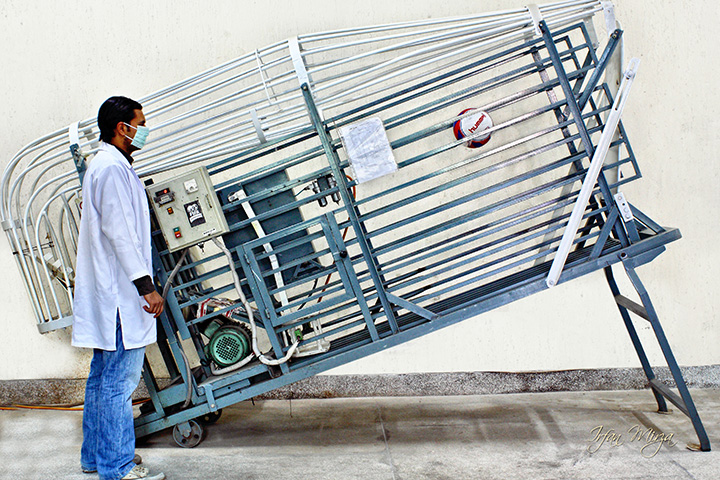Soccer’s international presence is genuinely indescribable. No matter what section of the world you are in, soccer is being played within a few street blocks. Of course, soccer isn’t the sport’s name everywhere. But regardless of what it’s called, the fundamental nature of soccer – kicking a ball in an attempt to score on the opposite team’s goal – is an idea that has existed for ages. The sport is arguably the world’s most popular because of its accessibility. Even the most under developed of the places one can find a way to play soccer, and this makes it an infinitely more obtainable source of entertainment than American football, or even baseball or basketball. However, even soccer, the sport of everyone, required one crucial element: the soccer ball.
Where Are Soccer Balls Produced?
Few know that a single city is responsible for an enormous portion of soccer ball production. Even fewer could guess the city, even if they were asked in the format of a multiple-choice question. Honestly, even if given a thousand chances, less than one percent of the population could ever figure out the location where 40% of the world’s soccer balls are produced. Most would guess China or America, but the actual answer is Sialkot, a small town in the Punjab province of Pakistan. Don’t feel alone or “out of the loop” because you learned this for the first time; this is one of the world’s lesser known facts.

History
Why Sialkot? The history behind the small town’s success and prominence in the soccer ball industry is intriguing, but not the magic story one might expect. Sialkot first international exposure was the 1982 World Cup, when the town’s “tango” ball was used for the competition. The use of this soccer ball brought Sialkot to the forefront, and from then on, they continued to be an enormous force in the soccer ball production industry. Considering the significance of producing the World Cup’s official soccer ball, and the competition that indubitably fought over the honor, Sialkot’s ability to create the best ball is even more impressive.

You might, however, ask why Sialkot developed a soccer ball in the first place. The first recorded occurrence of soccer ball production in the Punjab province was in 1889, when a group of British requested that some Pakistani create soccer balls for them. Their request stemmed from impatience; they were growing tired of waiting for soccer balls to arrive via shipment. After that, soccer ball production continued on, eventually developing to the extent that you see today. That British group’s request completely altered the framework of Sialkot, and Pakistan in general, which is a bizarre idea considering the relative mundanity of the original request.

The Modern State of Soccer Ball Production in Sialkot
Sialkot, much like one would expect, is visually representative of the city’s financial dependence on soccer ball production. Walking through the city, an incredible number of soccer ball factories can be found – a staggering 2000. With a population of just under 2 million, a huge part of the population works in soccer ball production, sometimes including entire families. Of course, Sialkot’s neighbors have not left the city’s crown unchallenged; a number of other Asian countries have put forward strong effort in an attempt to dethrone Pakistan’s spot at the top of totem poll. Despite this, Sialkot remains relatively unchallenged and maintains its superiority up to this point.

However, their continued dominance is surprising considering the city’s reluctance to adopt the production changes that some soccer ball producers encountered recently. Despite being shown more productive methods of soccer ball production, “only five of the 35 factories” in a study decided to actually use the new technology.

This is however changing as the FIFA has discontinued hand stitched soccer balls from international competitions and now increasingly the Sialkot businesses are adopting to modernize technology to cater for the demands from their international buyers.

The economy of Sialkot is highly dependent on exports as 99% of Sialkot’s produced goods are exported. This figure illuminates the city’s reliance on the soccer ball.
Sialkot Today
Despite the pressure that inevitably crept up on Sialkot’s dominance in the soccer ball production industry, it continues to lead the world in production. To this day, brands like Nike, Reebok, and Adidas all have their soccer balls produced in the Pakistani city. The World Cup obviously brings greater times of prosperity and production to the factories, and with one coming up shortly in the summer of 2018, the industry is surely preparing for the challenges that will come.

Next time you play with a soccer ball, consider the place it likely came from. Most never will, and how could you blame them? As a lesson for life in general, always think about the difference between the product and the producer.

While the privileged play with soccer balls without a second though, hard working Pakistanis put their heart and effort into making them despite low pay. The thought is hard to stomach, but that doesn’t mean we should avoid it.
Photo credits : Chaudhry Khawar, Craig Sunter, Jazmin Oteo, Steven Taylor, Craig Piersma and Irfan Mirza



